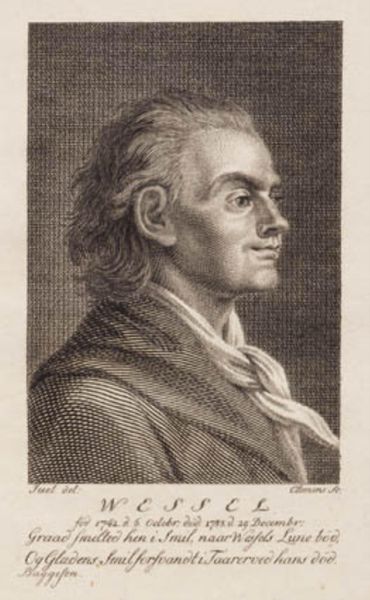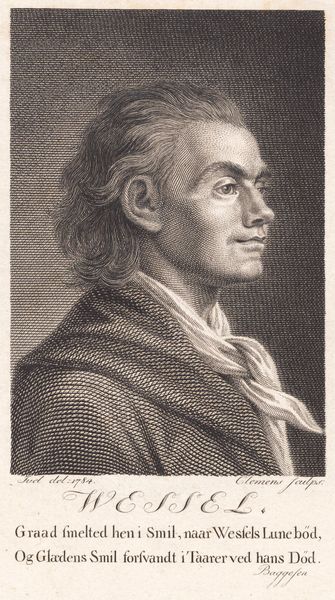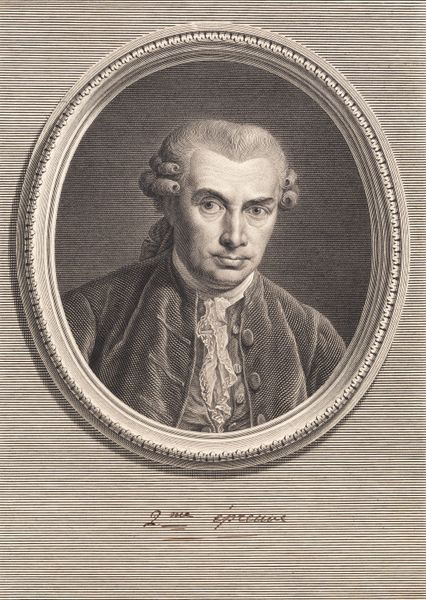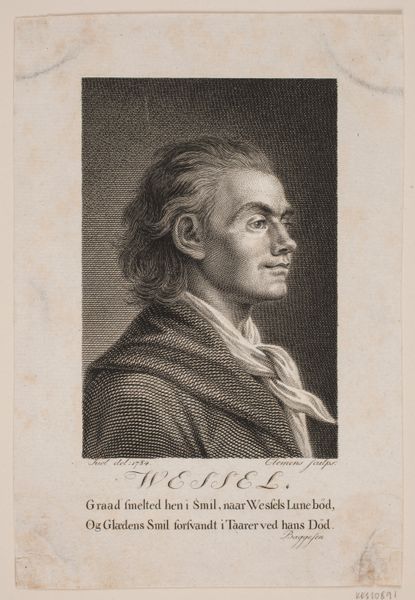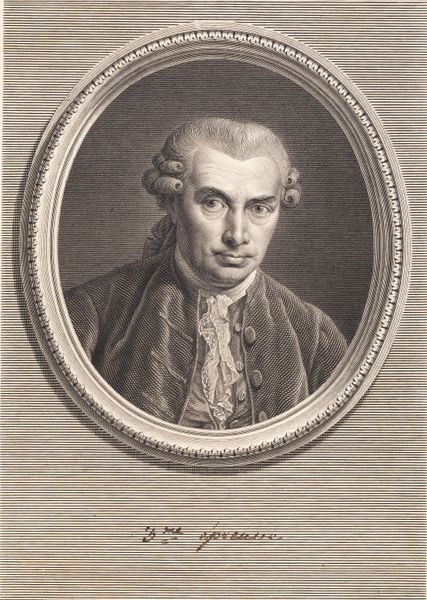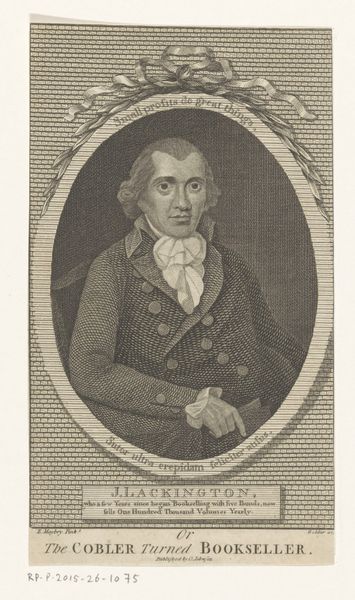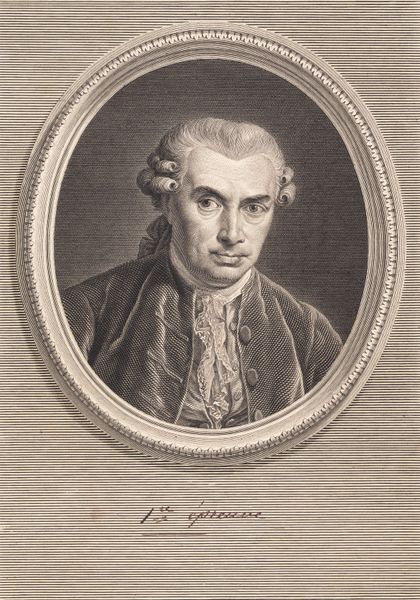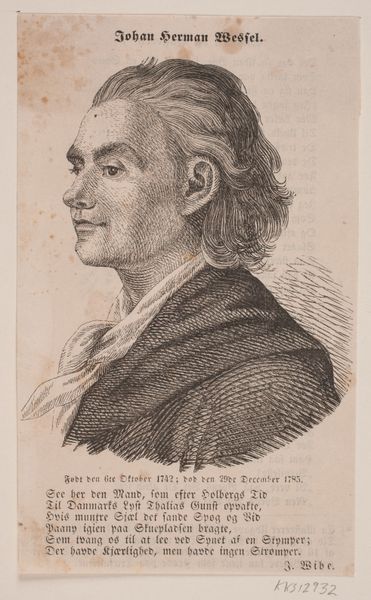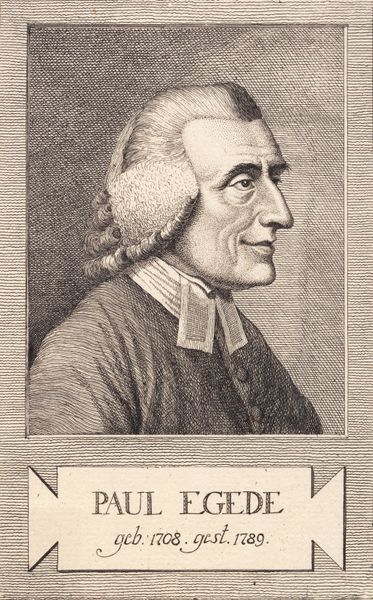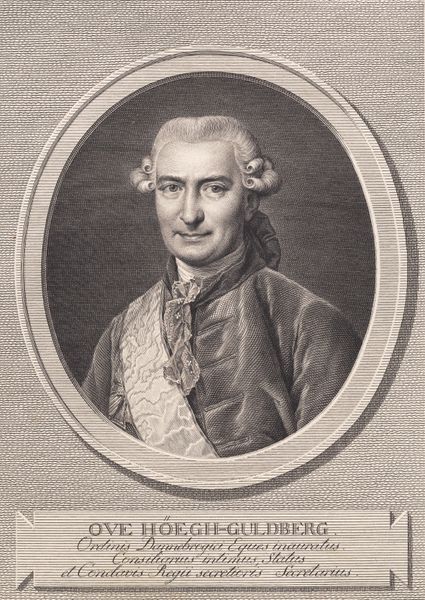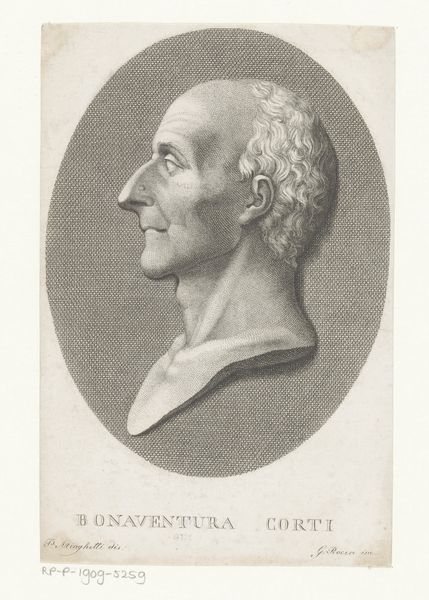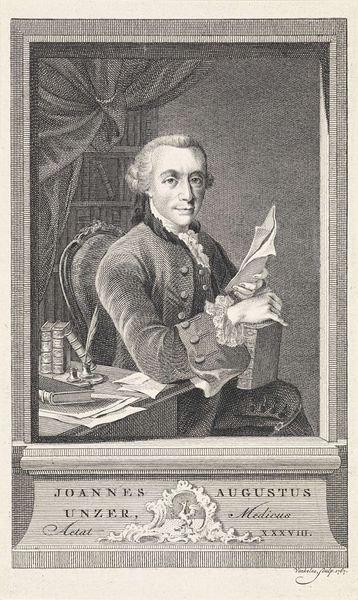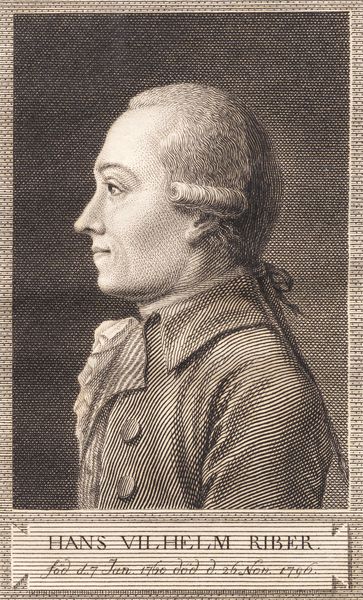
Dimensions: 171 mm (height) x 112 mm (width) (bladmaal), 149 mm (height) x 98 mm (width) (plademaal), 86 mm (height) x 58 mm (width) (billedmaal)
Curator: This portrait by J.F. Clemens, an etching from somewhere between 1748 and 1831, features Joh. H. Wessel. There's a stillness to it, wouldn’t you say? A sort of… contemplative quietude. Editor: Absolutely, it's subdued, almost monochromatic. It appears quite detailed and finely wrought for an etching – and I am wondering about the nature of the printing press. The amount of work in the linear hatching must have taken a while to render this plate! Curator: Oh, absolutely. Look at the way the light catches the fabric of his coat, the subtle shading around his eyes. It gives the impression that Clemens knew Wessel well, or at least observed him intensely. Do you get the sense of a specific narrative about him or time period? Editor: The labor really interests me; the repetitive, almost meditative act of creating those tiny lines, considering it was all manual. Etching, for me, always brings up questions about print culture. Who was the target market for this type of print? Were these mass-produced, or considered art objects from the beginning? What kind of labor laws existed? Curator: That's fascinating! It makes you consider the accessibility of art in that era. Thinking about this piece as an artifact – and how it existed. But on the purely visual side, isn't there a delicate balance here? The subject isn't idealized; Wessel is presented realistically. And it invites us to really observe someone long gone. I feel some Baroque era elements in there; the theatrical use of light and shadow perhaps, even if softened. What else? Editor: The portrait indeed feels lifelike; maybe the original copper plate was widely distributed? These prints would become dispersed through trade or perhaps travel to other countries and cultures. That kind of reach always affects our reception. Curator: Absolutely. It deepens our perception and highlights aspects previously unseen. Now, as we move on to the next piece... Editor: Agreed, let's go consider how distribution mechanisms affect artmaking next!
Comments
No comments
Be the first to comment and join the conversation on the ultimate creative platform.
